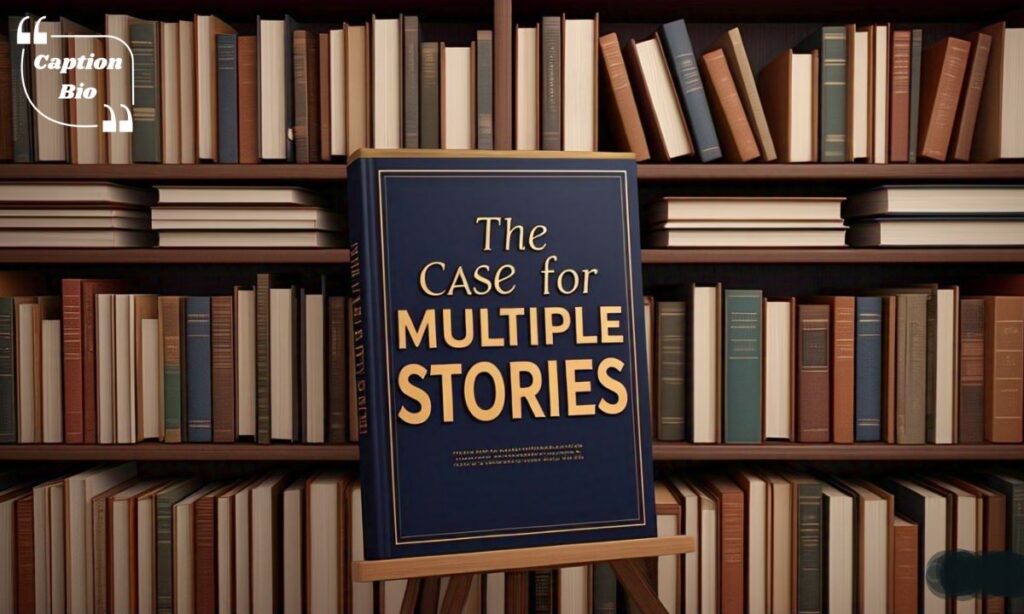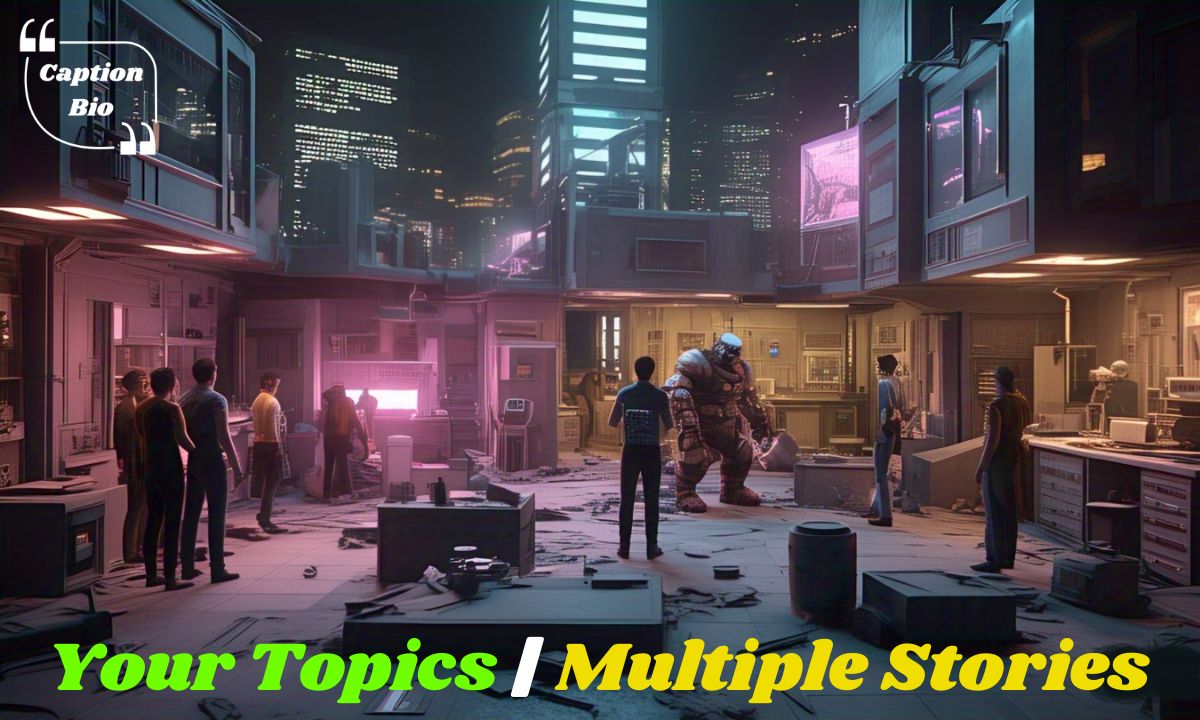Creating endless content starts with having the right topics. When one topic inspires many stories, you never run out of ideas. Each angle offers a fresh perspective to engage your audience. You can turn one subject into blogs, videos, reels, and more. This strategy saves time and boosts creativity. It’s your blueprint for consistent, powerful content creation.
Defining “Your Topic’s Multiple Stories”
Every compelling topic holds more than one story within it. Whether it’s a product, service, trend, or idea—there are multiple angles, voices, and perspectives worth sharing. “Multiple stories” means retelling or reframing your topic across different narratives to resonate with diverse audiences and contexts.
Key Traits of “Multiple Stories”:
- Same core message, different spin
- Aligned with various audience segments
- Supports different content formats
- Focuses on storytelling, not just information
Example:
Topic – Remote Work
- Story 1: “How Remote Work Empowers Working Moms”
- Story 2: “Remote Work is Changing Global Hiring Strategies”
- Story 3: “The Environmental Impact of Work-from-Home Culture”
The Case for Multiple Stories

Why limit yourself to one narrative when your topic can serve many purposes? Today’s content landscape demands flexibility, repetition with variation, and smart storytelling to stay relevant.
Why Use Multiple Stories:
- 📣 Keeps content fresh without reinventing the wheel
- 🧠 Improves audience retention by speaking directly to subgroups
- 📈 Boosts SEO performance by covering more long-tail keywords
- 🤝 Builds trust by showing different use cases or real-life examples
Core Benefits
Using multiple stories isn’t just a strategy—it’s a long-term investment. Here’s a breakdown of its major benefits:
| Benefit | Description |
| Increased Engagement | Different hooks and angles bring in different readers |
| SEO Optimization | More keyword variety and related searches |
| Better Conversion | Tailored stories drive stronger calls-to-action |
| Stronger Branding | Reinforces your core values in different ways |
| Repurposable Content | Easier to turn blogs into videos, social posts, or email campaigns |
Techniques for Spinning Stories <a name=”techniques”></a>
Turning one idea into multiple stories takes creativity, but there are several proven techniques that make it easier and repeatable.
1. Angle Shifting
Change the perspective:
- From consumer → expert
- From benefits → risks
- From individual use → enterprise use
2. Time Framing
Tell stories in different time zones:
- Past (history or origin)
- Present (current impact)
- Future (predictions)
3. Use Case Development
Highlight:
- Industry-specific examples
- Different user demographics
- Regional or cultural variations
4. Content Layering
Repurpose with added depth:
- Blog → Whitepaper → Infographic → LinkedIn Post
- Case Study → Video Explainer → Podcast Interview
Segment by Audience
To get the most out of your topic, tailor it to different audience types. People care about what directly impacts them. Use demographics, psychographics, and user behavior to segment properly.
Audience Segmentation Examples:
| Segment | What They Want | Story Angle Example |
| Students | Affordable, practical insights | “How Students Can Learn SEO for Free” |
| Startups | Fast solutions, low cost | “Top 5 Productivity Tools for New Startups” |
| C-Suite | Data-driven ROI | “How Remote Work Saves Enterprises Millions” |
| Marketers | Trends and tactics | “Top Content Formats in 2025” |
| Parents | Balance, well-being | “Remote Work Tips for Working Moms” |
Vary Your Format
Format variation not only makes your content more versatile but also opens up distribution across multiple platforms.
Content Formats to Explore:
- 📝 Blog post or article
- 📹 Video story
- 🎧 Podcast interview
- 📊 Infographic
- 🧵 Twitter/X thread
- 📩 Email newsletter
- 🎨 Carousel on Instagram/LinkedIn
- 📘 eBook or downloadable PDF
Tip: One topic can turn into 6–8 formats with slight tweaks in language and presentation.
Shift Narrative Frames
Reframing a topic gives it new life and fresh emotional appeal. It’s not just about “what you say”—it’s how you say it.
Narrative Frames to Consider:
- Problem/Solution: Start with the challenge, then present your solution.
- Before/After: Showcase transformation.
- Hero’s Journey: Make the user or reader the hero.
- Case Study: Real-world application for credibility.
- Mythbusting: Debunk common misconceptions.
Example:
Topic – Social Media Algorithms
- Mythbusting Frame: “No, Hashtags Don’t Increase Reach”
- Hero’s Journey: “How I Grew My Instagram from 0 to 50K Using Reels”
Invite Collaborators
Don’t go it alone. Multiple stories become richer when you include multiple voices—this boosts credibility, reach, and content value.
Collaborator Types:
- 🎤 Industry Experts: Offer authoritative takes
- 🤝 Partners: Co-branded or sponsored content
- 🧠 Users/Customers: Testimonials or use cases
- ✍️ Guest Writers: Expand your tone and style
- 📸 Influencers: Add storytelling flair and personal touch
Pro Tip: Use interviews or Q&A formats to streamline collaboration without heavy editing work.
Measuring Impact
It’s important to track which story variations perform best. Use data to guide future storytelling decisions.
Key Metrics to Monitor:
| Metric | What It Tells You |
| Pageviews | Basic interest level |
| Bounce Rate | Whether your angle held attention |
| Time on Page | Depth of engagement |
| Click-Through Rate (CTR) | Effectiveness of CTAs or story framing |
| Social Shares | Virality or relatability |
| Comments/Feedback | Emotional or intellectual response |
Tools to Use:
- Google Analytics
- Hotjar (for heatmaps)
- Social media insights
- Email open and click rates
Avoiding Common Traps
Spinning multiple stories doesn’t mean being repetitive or unfocused. These common mistakes can hurt your efforts:
Common Pitfalls:
- ❌ Rewriting the same article with minor edits
- ❌ Neglecting audience intent while changing formats
- ❌ Overloading readers with too many similar posts
- ❌ Losing your core message in the quest for variation
- ❌ Skipping SEO best practices when reframing topics
How to Stay Clear:
- Set a clear content map before starting
- Use editorial guidelines to ensure consistency
- Regularly audit older stories to avoid duplication
Action Plan: From Topic to Series

Here’s a practical step-by-step plan to turn one topic into a multi-story series that drives long-term engagement and visibility.
🛠 Step-by-Step Guide:
- Choose a Rich Topic
Look for depth, relatability, and demand (check Google Trends or AnswerThePublic) - Identify 3–5 Angles
Use techniques like audience segmentation, time framing, or mythbusting - Select Formats
Match formats to platforms and audience behavior (e.g., blogs for SEO, reels for engagement) - Create a Content Calendar
Spread your stories over time to build anticipation and prevent fatigue - Involve Collaborators
Reach out to 2–3 voices who can co-create or add testimonials - Monitor Results
Use Google Analytics, social insights, and comments to assess which angles work best - Repurpose Winners
Turn top-performing posts into new formats or longer guides
Conclusion
Crafting multiple stories from one topic isn’t just smart—it’s essential in today’s attention economy. It allows you to connect with different audiences, scale your content output, and build authority across channels. By spinning your topic into engaging, well-formatted, audience-specific narratives, you can extend its shelf life and significantly boost its impact.

Jane Doe, founder of CaptionBio.co.uk, crafts heartfelt messages to inspire love, gratitude, and daily positivity. Let’s spread kindness through words!






